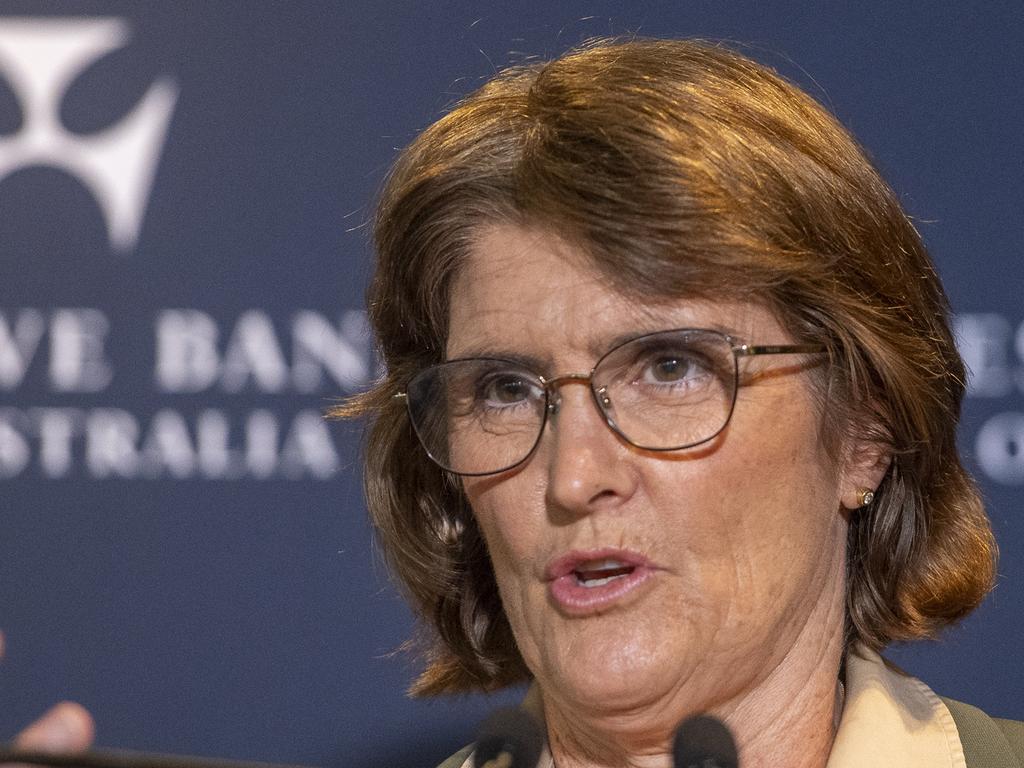Eleanor Creagh, Senior Economist, REA Group. Picture: John Gass
It was the data set expected to determine the fate of the rate for the rest of 2025. And higher than expected inflation figures have confirmed the cash rate won’t be coming down ahead of Christmas.
The release of the September quarter inflation numbers by the Australian Bureau of Statistics, revealed the Consumer Price Index (CPI) rose a shock 1.3 per cent for the quarter, coming in above expectations.
Annual headline inflation was up 3.2 per cent, with the most significant rises for the quarter in housing (2.5 per cent), recreation and culture (1.9 per cent) and transport (1.2 per cent).
The numbers have taken a November rate cut off the table and cast a serious doubt over a December cut.
The trimmed mean inflation came in at 1 per cent for the quarter, well above the RBA’s prediction of 0.6 per cent. Annually, the trimmed mean hit 3 per cent, at the top of the RBA’s preferred 2-3 per cent target band.
The data painted a stark contrast to the previous June quarter, where core annual inflation came in at 2.1 per cent; “the lowest annual inflation rate since the March 2021 quarter,” sas noted by Michelle Marquardt, ABS head of price statistics.
Finder’s head of consumer research Graham Cooke was one of many experts monitoring the situation. He noted the RBA had a dilemma on its hands.
“(This) data release will determine whether the RBA can continue its interest rate easing cycle or needs to put plans on hold, making it the most important inflation data release in 2025,” Cooke said ahead of the release.
“The RBA will be looking at this inflation data, as their primary role is to keep inflation in check – and only now are we starting to see it creep up again towards the upper end of their target range. However, they will also look at the labour market and overall health of the economy. I’ve heard some economists argue that the RBA needs to issue a rate cut not to combat inflation, but to stimulate the economy. It’s going to be interesting to see what they decide.”
MORE:9 banks slash rates, 3 RBA cuts confirmed
RBA Governor Michele Bullock said the labour market was tight. Picture: Richard Dobson
The most recent unemployment figures saw a jump to 4.5 per cent, but RBA Governor Michelle Bullock played down any potential reaction, when she addressed the Australian Business Economists annual dinner this week.
Bullock noted that the labour market remained tight and said that monthly data figures could fluctuate.
“The jump up in the unemployment rate was a bit of a surprise,” she said. “But monthly numbers can be volatile, and we do know sometimes that they jump up and then they jump back down again.
“We are conscious that we want to try to keep the unemployment rate as low as we can without fuelling inflation … it’s very uncertain, so we’ve got to be prepared to consider different possibilities.
“On the one hand, we’ve got unemployment a little bit higher. On the other hand, we’ve got inflation a little bit higher,” Bullock said.
“We didn’t go up as high as other countries, so it might mean we don’t have to come down quite as far as other countries.”
Former Sunrise host David Koch, now a spokesman for Compare the Market, claimed that a 3 per cent plus CPI number would lead to more drastic action by the RBA, in the form of a rate hike.
MORE:Rate decision about to go ‘nuclear’
“Unemployment is on the rise, which is a warning sign that the RBA may need to cut rates and get the economy moving again,” Koch said ahead of the release.
David Koch said the RBA may be forced to hike rates. Picture: Monique Harmer
“But if underlying inflation (that’s the trimmed mean) comes in at 3 per cent or above, the Reserve Bank may have no choice but to raise rates. That is the nuclear option.
“Anything above 3 per cent could trigger a hike.”
Koch said that fixing a home loan rate could be attractive to borrowers.
“The average variable rate is about 5.75 per cent, but we have rates as low as 5.34 per cent,” he said. “Meanwhile, there are two-year fixed rates around 4.75 per cent – that’s equivalent to four RBA rate cuts. This could be a great option for borrowers who are willing to fix their rate.
THE BLOCK:Fate of the two homes that failed to sell revealed
“If you can lock in a full percentage point difference for even six months, you could be ahead. Don’t wait for the RBA. Take control of your own rate.”
REA Group economist Eleanor Creagh said the results looked like being bad news for those holding out for further cuts this year.
“Governor Bullock’s message has been clear, if core inflation lands around 0.9 per cent for the quarter, that’s a material miss and meaningfully lowers the chance of another rate cut in 2025,” Ms Creagh said. “The bank remains cautious and data dependent in driving its next move and won’t be bounced by monthly noise. It will weigh the full quarterly read, especially the trimmed mean, before easing further. As a result, the decisive information is inflation data for the September quarter. This will determine whether we get a rate cut at the RBA’s meeting in early November.
NAMED:Aus’ shock top property suburbs for 2026
Finder’s head of consumer research Graham Cooke.
“Underlying inflation appears to have been strong in the September quarter and above the RBA’s expectations in the August 2025 Statement on Monetary Policy (SMP). If underlying inflation prints hot tomorrow, a rate cut in November is likely off the table. However, a softer trimmed mean outcome would re-open the door to a November cut.”

